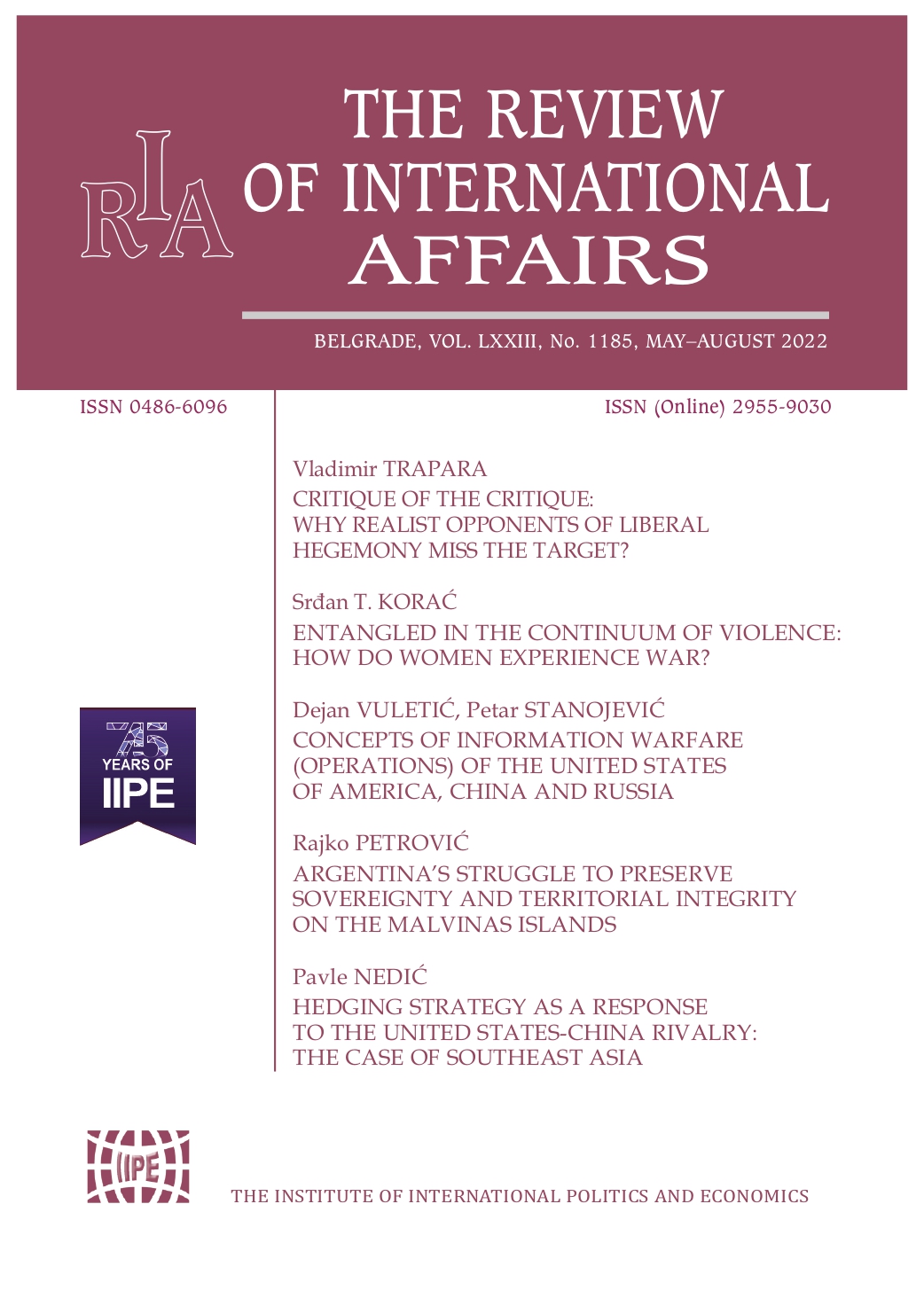Hedging strategy as a response to the United States-China rivalry: the case of Southeast Asia
Hedging strategy as a response to the United States-China rivalry: the case of Southeast Asia
Author(s): Pavle NedićSubject(s): Politics / Political Sciences
Published by: Институт за међународну политику и привреду
Keywords: hedging; Southeast Asia; Singapore; US-China rivalry; South China Sea
Summary/Abstract: The Southeast Asian countries use a hedging strategy to respond accordingly to the risk that the great power rivalry between the United States and China presents in the region. Hedging is focused on the creation of backup options to be used if the situation in the region escalates. These options are created through engagement with the potential threat and deterrence through a form of soft or indirect balancing. The article focuses on the behaviour of regional states, particularly Singapore, as an illustrative case study, to examine evolving hedging practices aimed at creating viable response options in the wake of the increased tensions in the region. The author argues that the second decade of the 21st century brought two developments that increased uncertainty in the region: growing tensions over the South China Sea and the American pivot to Asia initiated by the Obama administration. In response, the Southeast Asian countries were incited to hedge more directly by diversifying their economic partners and upgrading their defence capabilities. However, the US-China rivalry will continue to grow, and it will become more difficult to successfully use hedging strategy.
Journal: The Review of International Affairs
- Issue Year: LXXIII/2022
- Issue No: 1185
- Page Range: 91-112
- Page Count: 22
- Language: English

